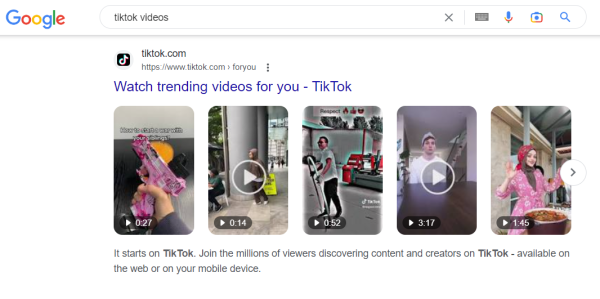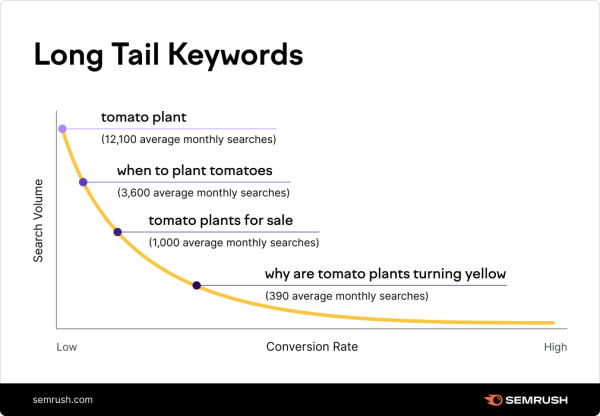
Raquel Reis
Digital Marketing Strategist & Content Manager
That an SEO strategy is our great friend to optimize and position websites and blogs in Google, which we already know. And for social networks, is it relevant?
The data is not deceiving and the truth is that almost 40% of young people, when looking for a restaurant do not use the search option or Google Maps, but social networks such as Instagram and TikTok.

Raquel Reis
Digital Marketing Strategist & Content Manager
That an SEO strategy is our great friend to optimize and position websites and blogs in Google, which we already know. And for social networks, is it relevant?
The data is not deceiving and the truth is that almost 40% of young people, when looking for a restaurant do not use the search option or Google Maps, but social networks such as Instagram and TikTok.
These Google services are currently “threatened” by a growing preference for social networks as the first stop when searching, whether for a product, brand, or place.
Users nowadays search for information in a more immersive way through videos, forgetting a bit about searching by famous keywords.
It is becoming clear what we are getting at?
Digital is always changing and we cannot stand still. Social media managers know this; they are even realizing the importance of SEO in social media strategy and, of course, implementing it. According to the Global Social Media Trends Report, 89% say that social media search is important to their strategy.
If there were few doubts, now there are even fewer: optimizing content for social media search is no longer a nice-to-have, but a must-have.
What is an SEO strategy for TikTok?
Just as we do for web pages, this strategy is to optimize the videos on TikTok, through keywords, so that they come up first in search engines.
How important is SEO, if TikTok is not even a search engine?
Yes, it’s an entertainment social network and not a search engine, but users use it as such via the search bar on the platform itself.
TikTok has even been adding more options to improve video search: they have expanded the video description field from 300 characters to 2,200 and users can edit the subtitles (something previously impossible).
Also with the Google update that allows us to see TikToks in search results, we have been able to increase traffic to our accounts.
 Source: Google search
Source: Google search
What’s this SMO thing?
When we refer to optimizing content specifically for social networks the correct term is not SEO, but SMO – Social Media Optimization.
However, given Google’s new option that allows TikTok video search, it is possible to cross-reference the two – SEO & SMO -, and optimize content for both Google and the social network itself. The two strategies are allied and complementary.
There is no doubt that it is a great advantage to virtualize our videos and, consequently, reach more followers.
The way to implement a TikTok SEO & SMO strategy
Creating this strategy can seem like a difficult process and to help, we have simplified this process into 5 steps.
It all starts by understanding the audience and its research intent
As with any strategy, the foundation is to understand your audience and what they are looking for.
Start by analyzing the videos on TikTok that your followers are interacting with, what hashtags they are using, and the comments and messages they are leaving. By cross-referencing this data, you can identify their main interests.
Imagine you have a hair cosmetics brand and your goal is to attract an audience that is looking for the best shampoo products for their hair type.
This audience may be looking for, for example, “best hair products”. To help you understand what the users’ search intent is you can use tools like AnswerThePublic and make a list of possible options.
Moving on to the next step…
Choosing the right keywords for the videos
We venture to call this step the core of SEO & SMO strategy: selecting the right keywords, the ones that will attract your audience.
To select the best keywords you can follow 3 key SEO points:
- Search volume – how many people are searching for the keyword
- Relevance – how relevant is your content to the keyword being searched for
- Keyword difficulty – the effort required to make your content rank well for a given search term
Several tools help you choose the best keywords such as Google Ads Keyword Planner, Semrush, Ahrefs, and Ubersuggest, among others. But these are essentially oriented to Google and not to TikTok.
As the implementation of an SEO strategy for TikTok is somewhat recent, there are currently no tools specifically geared toward this platform. But there is a great new feature: the Keywords Insights created by TikTok itself that helps inspire ad creation and may become a help for SMO. It’s worth a try!
 Source: Keywords Insights on TikTok
Source: Keywords Insights on TikTok
While we are testing this new tool, the ideal is to apply the search process as we exemplify below, imagining once again that we are a hair cosmetics brand: Source: TikTok search
Source: TikTok search
When we searched for “best hair products”, the platform itself provided several combinations of related keywords that users are interested in or actively search for: “best blonde hair products”, “…curly”, and “…straight”.
From this type of search, we were able to gather several relevant keywords for our strategy.
Embedding keywords in videos
Embedding the keywords in the video
We have reached the stage of including the keywords in the video. They should be added in the titles, descriptions, captions, and covers, and spoken aloud.
TikTok’s algorithm favors videos where the keywords are said. One tip is to mention them in the very first 3 seconds.
These should also be in hashtags so that, in a search phrase, our videos are more easily found by users. So, as in a Google SEO strategy, you can use the main keyword and variations of it.
In short, there are five ways to incorporate keywords into TikTok videos:
- In-video text
- Speech
- Caption
- Hashtags
- Automated closed captions
Ideally, you should put all these options together so that the video is optimized.
Determining a hashtags strategy
The phrase “the more the merrier” is not the best strategy when it comes to hashtags.
A good strategy involves having hashtags that match the content covered in the video and that combine long-tail keywords with short-tail ones.
What makes them different? Long-tail keywords are more specific and have less search volume, but the conversion rate is higher. In a TikTok SEO & SMO strategy, we suggest using both types of keywords.
 Fonte: Semrush
Fonte: Semrush
Again, using the hair cosmetics brand as an example… #bestblondehairproducts” is a hashtag using a long-tail keyword. The goal would be to reach an audience with an interest in knowing specific products for blonde hair. Using a short-tail like #hairsproducts, the goal is to reach the largest number of users with an interest in this topic in general.
Indexing is also a good way to use hashtags and drive series/short-tail discovery. For example, when creating a series of content about summer hair care, you could incorporate the hashtag #[account name]haircaresummer and thus group several videos that address this topic.
Analyze, learn, and review the strategy
Last but not least important. It’s, in fact, one of the most important in any strategy: analyze data.
A TikTok SEO & SMO strategy is no exception.
Analyzing the videos’ data will give you insight into their performance. The algorithm takes into account the number of views, likes, and comments a video gets, as well as what other users are searching for.
If your videos have gone viral, you can reuse hashtags and create a second series on a particular topic or do A/B testing with similar hashtags.
Analyze, learn, and readjust. But if it goes well… repeat!
Now that you’ve reached the end, remember that more than ensuring relevance when creating content for the algorithm, optimizing it allows you to offer value and strengthen the relationship with your audience.
We don’t communicate for algorithms, but for people.
